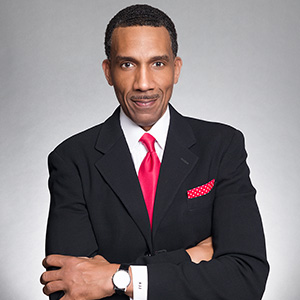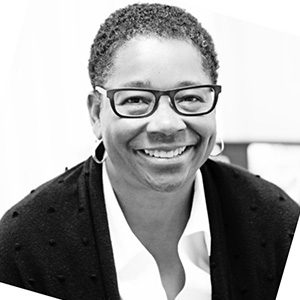Consultant Answers
Arquella Hargrove

In many instances, companies begin the journey with some false starts, because the foundation is lacking. The key to beginning the DEI journey is to first determine the “why” for the company, how this effort aligns with existing core values and mission, and the community impact. Yes, DEI makes business sense, and it also makes people sense. So, be sure there is a commitment to building or refining the company culture, and that there is a desire to reflect the communities being served. Consider the following initial steps to start the journey:
- Engage leaders and team members in a conversation about DEI to understand the different perspectives and gage initial interest.
- Conduct a company assessment to review various data points to understand the current DEI landscape, areas for improvement, and where to start.
- Offer learning and development opportunities along with other fundamental activities, such as communication enhancements.
- Meet and involve team members where they are and how they want to show up in the space.
In any organizational culture change effort, there are team members, including leaders who get it, embrace it, and are the voice. Then, there are some who may take longer to get on board, and that is okay and is part of the process. Consider the following options:
- Make DEI relevant and personal for team members and leaders.
- Share supporting data or evidence showing the needs linking to the overall company objectives.
- Take time to listen and learn, giving people a voice.
- Create gateways for advocacy and awareness.
I am diversity, equity, and inclusion, because of my life experience. As someone who has worked in the HR arena for over 30 years, I have championed to create and support workplaces that are employee centric to ensure everyone is valued, respected, heard, understood, validated, and have an overall sense of belonging. Our world is changing, which requires our workplace cultures to shift as well, and I want to see all people treated fairly and with dignity. I am reminded of a great quote by the late, Dr. Martin Luther King, Jr, “Darkness cannot drive out darkness: only light can do that.” I do this work as a change agent to bring that light.
Ask ALL employees to get involved with moving the needle related to DEI within the company. Ask if they want to be involved, make it personal for them, share the benefits, and ask what they want to do. Do not start assigning people to roles without their permission or making them the go-to for all things based on their race, ethnicity, or cultural background.
The official Webster Dictionary definition is the action or state of including or of being included within a group or structure.
Inclusion is the “how” to Diversity. This is acting with intention to ensure that all people feel valued, heard, safe, empowered, and belong on the team and at the company. Inclusion is a behavior that can be learned, which allows for people to see DEI in action leading to retention, engagement, and a step forward on the journey.
Consultant Answers
Stan Kimer

I believe the one very crucial thing that all successful DE&I programs have in common is that they have long-term commitment from top leadership in the organization and are focused on truly making DEI pervasive across all aspects of their corporate culture. DE&I is not just something you do now and then, but something this is a strategic part of all organizational strategy and everyday operations.
First, senior leaders need to be visible role models of DE&I in terms of how they lead and manage their functions. They need to imbed a DE&I lens in everything they do and in building their own functional strategies. All employees should clearly see how their senior leaders are focused on DE&I in items like how they recruit employees and build future leadership. Externally, senior leaders should be visible spokespeople for DE&I, but most importantly they need to assure that internally their organizations are “walking the DE&I talk” they espouse in their public statements.
I think the most difficult part of implementing a DEI program is to make sure it is strategic, ongoing, and integrated with every aspect of the business. The worst thing that can derail DEI progress and programs is viewing it as an “optional nice to have” and cutting budget, and stopping and starting programs every time there is a financial squeeze.
I have seen the most resistance to D&I from older straight white men who feel they are left out of the discussion. It is far too easy to get into “shaming the blaming” majority communities and turning the discussion into a “we vs. them” or “the diverse and the non-diverse.” Instead, we need to provide the message and every single person is a unique and valuable part of the diversity story, and that we are all in this together.
To start your own journey as a D&I advocate, I would suggest starting with one underrepresented population and get engaged with them. For you, it may be supporting people of African descent, or perhaps people with disabilities, or maybe the LGBTQ+ community. Build some friendships with people in that group, attend some of their employee resource group or community events, and then think about some actions to you take to show support and advocacy for that group, and then grow from there!
Consultant Answers
Shanta Eaden

DE&I is successful when it’s integrated into culture. DE&I shouldn’t be treated as a separate initiative that one or two people have responsibility for. Instead, it’s ingrained into company culture, in who they are and how they operate. Although you should absolutely have a designated leader responsible for DEIB (like any other function), when positive impact on company culture is the goal, there’s a level of shared responsibility for the leaders and employees alike.
Just start. Everyone has an opportunity to contribute to an inclusive culture. As companies get started, approach this work with the same level of intent as you would any other business imperative. Companies should access the current state, strategize, plan, execute and measure.
Diversity is all of the ways we are unique. It’s an acknowledgment of our differences.
Inclusion is acceptance of our differences, where everyone feels valued and respected. Inclusion is also a verb, and it is demonstrated by our behaviors and actions. When we start with inclusion, no one is left behind. It’s a universal language.
Consultant Answers
Miriam Lopez

A diverse workforce is crucial to an organization’s ability to innovate, problem-solve, and respond to challenges and opportunities. As humans, our perspectives are based on our lived experiences. Organizations without diversity are operating inside similar lived experiences, essentially creating a status quo of ‘the same’ that hinders organizational growth. Building a diverse workforce not only offers an organization different perspectives from which to approach internal operations, it also strengthens a company’s culture, builds teamwork, and connects the business to the greater community/customer base it serves.
Oftentimes, people approach DEIB as a check-the-box or compliance issue versus a shared humanity issue. DEIB work is for all humans and benefits everyone – not only minority groups. We often find that people are surprised going through our training, either because they didn’t believe the work applied to them, or because they initially saw it as a sign the company had a problem they needed to ‘fix.’ In truth, organizations committed to DEIB see the work as an opportunity versus a problem and enjoy better engagement among all employees, less turnover, and a drastic improvement in innovation and performance, to name a few.
We all crave a sense of belonging. Belonging takes DEI work one step further. It goes beyond inclusion and addresses how employees judge the meaning of their work and whether or not they can see how their efforts contribute to an organization’s overall goals and objectives. Belonging creates connection, community and purpose for employees, and is directly related to retention and productivity. While it is true belonging is a more recent addition, it is a crucial step in the DEIB work and should not be overlooked. We are wired for belonging.
Consultant Answers
Arthur J Johnson

As the Chief Learning and Development Officer at Alchemy, I am excited to bring my passion for continuous learning and growth and my extensive experience in designing and implementing cutting-edge learning programs and development strategies to the Alchemy team. I am passionate about helping individuals and teams unlock their full potential by providing them with the tools and skills they need to succeed in their roles and grow personally and professionally.
To me, leadership means empowering and inspiring others to reach their full potential, while fostering a culture of collaboration, accountability, and continuous learning. It is about leading by example, being transparent and authentic in your communication, and always striving to improve and innovate.
One common misconception I see organizations have when it comes to creating effective leaders is assuming that leadership is an innate talent that some people are simply born with. The truth is that leadership is a skill that can be learned and developed through training, practice, and feedback. Organizations that invest in developing their employees’ leadership skills can create a culture of growth and development, which in turn drives the organization towards success.
By prioritizing mental health and wellbeing in the workplace, organizations can create a culture where employees feel valued, supported, and empowered to perform at their best. A healthy work environment can lead to increased productivity, improved job satisfaction, and decreased absenteeism and turnover rates. This, in turn, can lead to increased innovation, collaboration, and overall success for the organization. Additionally, organizations that prioritize mental health and wellbeing in the workplace demonstrate their commitment to creating a positive and inclusive work environment that attracts and retains top talent.
Consultant Answers
Debbie Richards

Highlighting and including the AAPI community in L&D and DEIB initiatives can help address biases and stereotypes, promote career advancement and professional development, and demonstrate a commitment to diversity, equity, inclusion, and belonging. This can include addressing microaggressions or unconscious biases that may impact the experiences of AAPI employees, as well as providing education and resources to help all employees better understand and appreciate the diverse backgrounds and experiences of their colleagues.
Despite the diversity and size of the AAPI community, they have historically faced various forms of discrimination, including discriminatory laws and policies, and negative stereotypes and prejudices. In recent years, there has been an increase in hate crimes and discrimination against the AAPI community, particularly in the wake of the COVID-19 pandemic.
My advice to companies on the fence about implementing L&D/DEIB policies would be to take action, involve diverse perspectives, and prioritize these initiatives as a critical part of their organizational culture and success.
Debbie Richards, President of Creative Interactive Ideas, has been active in the industry for over 30 years and is widely respected for her knowledge, passion, and commitment to creating high-quality e-learning experiences that help people learn and grow. Debbie Richards is also a Learning Guild Master, a prestigious title that recognizes individuals who have made significant contributions to the learning and development community. In this role, she has shared her expertise and insights through numerous presentations, workshops, and publications, helping others to improve their e-learning and instructional design skills.
Consultant Answers
Sheila Alexander Reid

Employers are finding that providing a sense of belonging is important to recruit and retain quality employees. This impacts the bottom line in a positive way. One easy way to do this is to celebrate the various months that celebrate diverse communities that represent their staff. Celebrating June as Pride Month company-wide highlights the diversity of a company and provides a much-needed sense of belonging to those that identify as LGBTQIA+ and their allies.
- Create a group from the LGBTQIA+ to lead the program or celebration
- Hire LGBTQ leaders
- Highlight them in June
- Participate in and sponsor local Pride parades and events (invest money in the community)
- Gender identity and sexual orientation are the same thing
- Assume all Transgender people are gay
- Don’t understand that racism exists within the LGBTQIA+ community
- Assume white, gay men are the face of the community
- Assume all people with disabilities are straight
- Create culturally sensitive employee HR forms that track your diversity (ask for pronouns, gender identity, etc)
- Create mission statements and or signage that show strong support for the LGBTQIA+ employees (“Zero Tolerance For Hate”)
- Mandate LGBTQIA+ Cultural Sensitivity Training for all employees annually
Consultant Answers
Joni Goodman

Coaching for senior leaders requires an approach that focuses on supporting critical activities such as developing the business strategy, casting a vision, and setting the overall direction. Middle management is best supported on the tasks that carry out the strategy, bring the vision to life, and execute the direction that has been set to meet the organizational goals. Emerging leaders need guidance in knowing how what they do fits into the team, department, and organization along with how what they do matters and makes a difference. Regardless of their role within the organization, all levels benefit from support and guidance to be introspective and more keenly aware of who they are. This is what has driven my focus over the years to help you to break through to a better YOU!
Communication skills. Communication is the foundation for all that we do personally and professionally. Most often, whenever there is conflict or heightened emotions in the workplace it is due to a miscommunication. There are many assessments available like DISC®, TTI TriMetrix® EQ and Personalysis® that aid leaders in gaining a better understanding of how they communicate, their preference for how others communicate with them, and communication that triggers them emotionally knocking them off course. Another skill that goes hand in hand with communication is authentic connection. Making the time to authentically connect with your colleagues and subordinates alike will pay off tremendously with increased productivity, especially when times get tough. We as human beings are neurobiologically wired for human connection, yet we don’t always make the time to connect with others about who and what matters most to them both inside and outside of work.
The right time for coaching is ultimately dependent on when the individual is at a place where they can truly receive the support they need from a coach. Leaders typically reach out for coaching support when they are looking to make a change in their career, when circumstances are not going well with a colleague, or when their performance has been negatively impacted. They are usually in a “discomfort leads to growth™” phase and are unable to get themselves out of the funk they seem to be feeling, regularly. They desperately need to get back to that sense of belonging they once possessed and feel safe to express themselves from where they are. It’s always the ‘right time” for coaching especially proactively versus reactively. The key is being willing to admit that you need help, open to receiving the support, and receptive to taking the necessary actions to remedy the situation.
Leaders at all levels should prepare their mindsets and acknowledge the way they have always led getting them to this point in their careers may not be the way that carries them successfully into their future careers. The one thing that is constant in the workplace is change. Leaders need to be willing to continue to grow, evolve, and expand their leadership skills. Partnering with a coach to support them will make this journey much smoother than the pressure to go it alone.
Consultant Answers
Alison Martin

A skills-based mentoring program is a powerful way to ensure employees have the skills needed to be successful and also to ensure your leaders have the opportunity to connect with employees in a meaningful way, thereby growing their leadership capacity and helping them spot talent.
A skills-based mentoring program is a powerful way to ensure the knowledge transfer needed for effective succession planning is occurring before it is too late. In addition, development opportunities such as these are a powerful driver for employee engagement and retention. In addition, access to relationships and development opportunities is the top priority for the generation of employees now entering the workforce, so this offering is a strong value proposition to attract new talent as well.
Many companies overlook mentoring as a powerful strategy for developing talent because too often, mentoring is focused more on the relationship and the results are hard to measure. The reality is a skills-based mentoring approach that mirrors the apprenticeship model is a powerfully efficient way for employees to learn and measure results from. In addition to the learning, the result is a culture where leaders are engaging with their people and employees know where to turn for resources.
Consultant Answers
Dr. Jobi Martinez

We believe equity is meeting our communities where they need to be met. We look at what our patient care looks like. What are we doing in that patient equity space? Because we do serve the most vulnerable populations in Harris County. These are individuals with diverse immigrant status, citizenship status, low socioeconomic status, and other individuals who we know by research and we see in practice are left out of—or there are barriers for these individuals—in the healthcare community. One of the things we strive for as a system is we work really hard to remove those barriers and oftentimes we look at Community partnerships.
Something we’re known for is our food pharmacies, located throughout different clinics. It’s kind of like a mini food bank. In a space they’re about to open, the food pharmacy is right up front in the patient waiting space, so patients can see what’s available to them. We receive donations from the Houston Food Bank, and we prescribe it like a prescription food pharmacy. We call it a FARMACY. Patients are eligible for up to 30 lbs of fresh food, and we also do cooking classes, and a lot of nutrition. We also take a look at what resources we have in the health equity space for staff. We’re constantly evaluating, asking “what do our employees need right now? What do they need in the communities we evaluate?”

